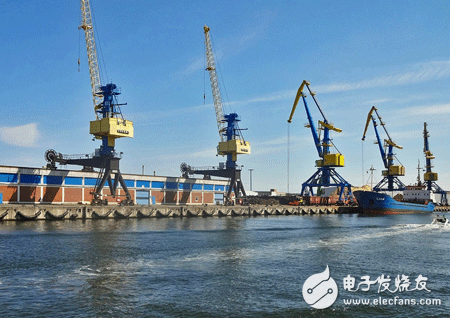Connected assets help to reduce costs and improve efficiency. If you can properly grasp the following five elements: ways to collect the required data, online and security considerations, direct and indirect costs, and methods of communication between systems The security and scalability of the system provide a great opportunity to ensure the success of the plan. According to IIoT World, corporate networked asset plans may each have different considerations, but all can benefit in many ways, such as less downtime, lower maintenance costs, higher asset utilization, and the use of The rate and performance can have in-depth understanding, etc., and can reduce warranty requirements, or take advantage of active maintenance to reduce the cost of providing services. With the emergence of simple yet powerful edge computing products, it is easier than ever to implement client-connected assets. Deploying the Industrial Internet of Things (IIoT) involves a variety of sensors, protocols, and data formats. It must ensure that the assets are connected to the network and widely supports various data transmission protocols. This allows the data collection methods to be balanced with products that have been built on the client. New products provide services. A reasonable approach is to collect and normalize (normalizaiton) data in the margins to ensure that the data is homogenized and that it can be applied to pre-defined data models and enhance the value of the data with meaningful metadata. The way in which assets are connected to the network must enable the smooth development and operation of IIoT. Therefore, it is necessary to first assess the current infrastructure and security of the network and IT in the organization. Ensure that the wireless technology used when the sensor starts transmitting data can provide sufficient bandwidth, coverage and signal strength, and can increase the amount of network traffic. What's more important is the way data is stored. It must ensure the future, scalability and security of the IoT architecture of the Internet of Things. Edge computing supports direct analysis and execution of related operations where data is generated. Even if networked assets cannot continue to operate normally with the cloud, data can be processed without being transmitted to the cloud data center. The team that implements the Connected Asset Plan wants to maintain the simplicity and efficiency of operations, and the edge operation is the best way to achieve this. The most important direct cost of connected network asset planning is cloud service and bandwidth. The solution must analyze, process, and respond as much as possible in the place where data is generated, and carefully distinguish data that is absolutely necessary to be transmitted to the cloud. The life cycle cost of equipment is the most important indirect cost, and management must be managed to achieve high efficiency and cost effectiveness. One of the goals of the Connected Assets program is to reduce the cost of service and repair parts. Combining easy-to-use edge computing with cloud platforms, it provides intelligent coordination and integration functions. Advanced aggregation (aggregaTIon), compression (compression) and filtering technologies can improve asset efficiency and reduce direct and indirect costs. Older IT infrastructure such as enterprise resource planning (ERP) or customer relationship management (CRM), the biggest challenge for integration with connected assets is the lack of communication interfaces. Establish a platform for seamless integration of cloud and enterprise systems, and use edge technology with connectors to upload the intelligence generated by machine data of connected assets directly to enterprise IT systems to facilitate analysis, simplification, and visualization of existing business processes. The platform also provides a fully documented API and SDK to facilitate the development of domain-specific systems, legacy applications, and self-developed solutions within the organization. Scalability does not only refer to hardware costs and data volumes, but also considers the best and indirect costs of managing a large number of networked assets in the field. Enterprises should choose an extensible architecture that is not limited to specific hardware to ensure future success. In terms of security, if networked assets only need to transmit data, and there is no demand for receiving data, they are less likely to be infected or attacked. Enterprises should separate the data flow of the Internet of Things from other parts of the network and only store necessary data. .
Battery Connector:Cell phone battery connector Net bookbattery Connector ,Cell Phone Battery Connector.
Power connector, which includes an insulating body and a plurality of terminals, the insulating body has a plurality of holding slots which hold the terminals, the insulating body is additionally provided with at least one tongue piece which isolates the terminals, the terminals are respectively provided with a barb, the terminals are respectively extended outwards on the first side of the barbs with a plurality of contact parts, and the second barb A plurality of wires are fixed at the side; through the above structure, the barb of the terminal can be embedded in the insulation body, and the terminal is easy to assemble, and only needs to be pushed into the insulation body, and there is no short circuit equivalent energy between the terminals.
Battery Connector ShenZhen Antenk Electronics Co,Ltd , https://www.antenk.com